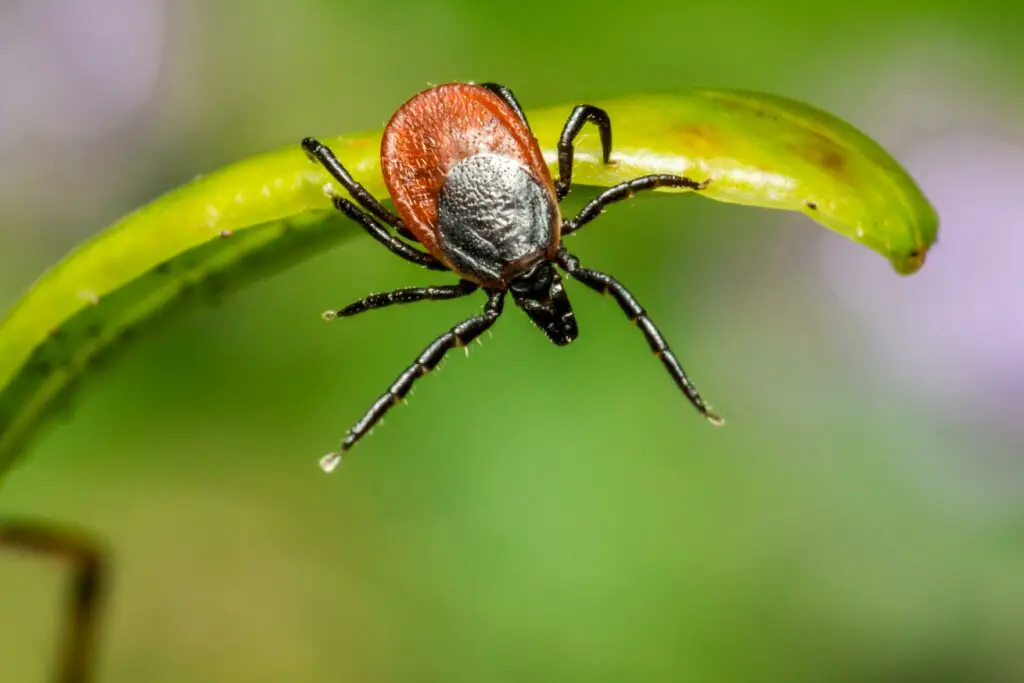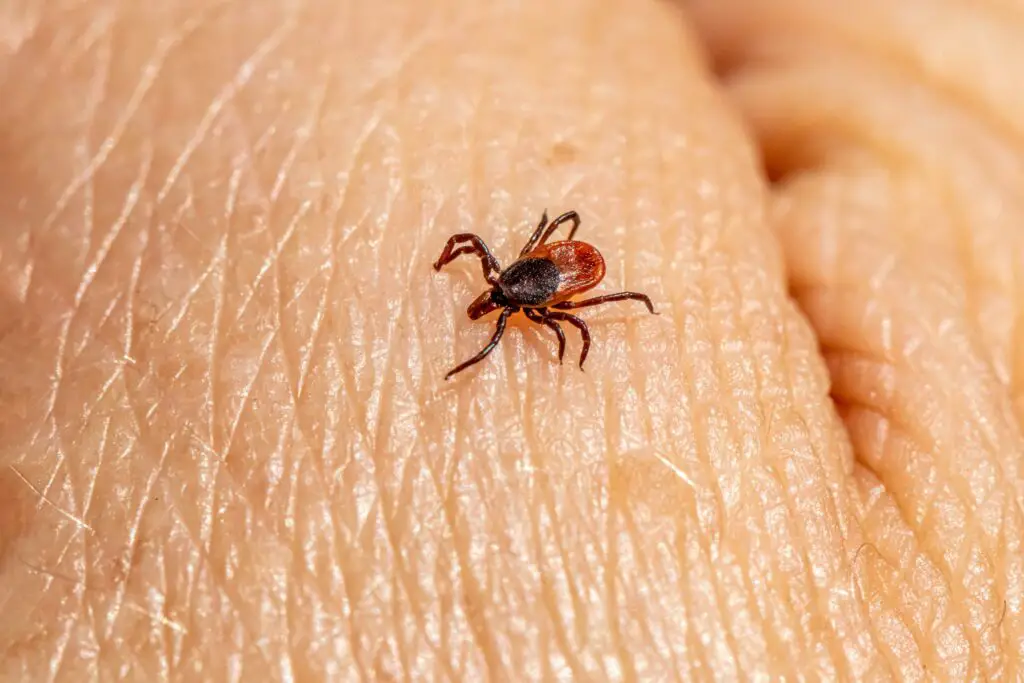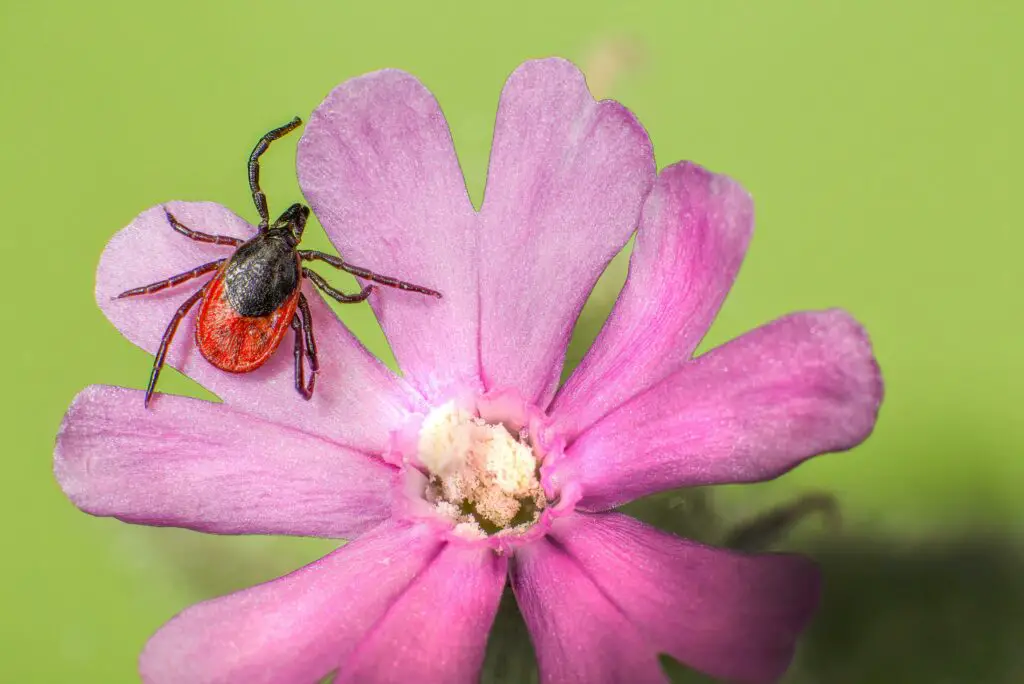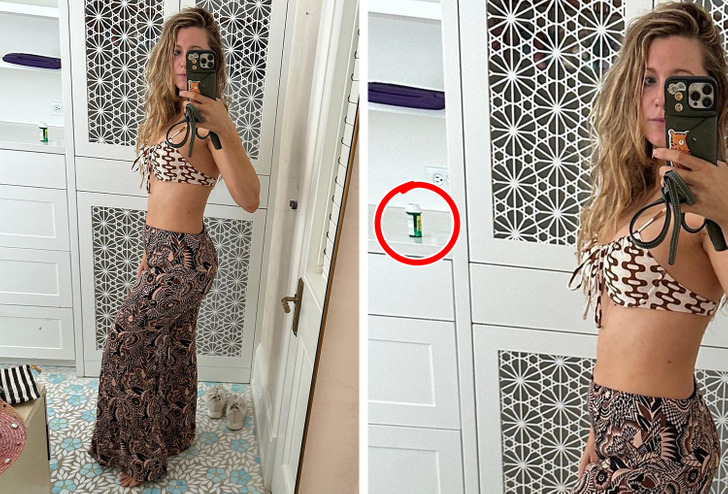Nature is the home to an incredibly versatile array of species, but ticks are definitely one of those that we tend to avoid at all costs.
These tiny arachnids, that are related to spiders, mites, and scorpions, are in fact parasites that survive by attaching themselves to larger animals and feeding on their blood. Humans aren’t spared either. Sadly, these insects carry harmful bacteria that can spread disease to people.
Sadly, tick-borne diseases are at an all-time high, with about 50,000 cases reported each year, and far more going unreported.

There are different types of ticks, and unfortunately, they sometimes find their way to people’s homes. The types most commonly found in homes are the black-legged tick, the dog tick, and the brown dog tick.
- Black-legged Ticks – known as deer ticks, these ticks are typically brown or black in color and have a flattened, oval-shaped body. They are commonly found in wooded areas and can transmit Lyme disease.
- Dog Ticks are larger and can range in color from brown to reddish-brown. They have a tough, shield-shaped body. Dog ticks can transmit diseases such as Rocky Mountain spotted fever.
- Brown Dog Ticks are brown in color and have a slender body.
Although the tick season is between March and October, or sometimes longer, we should be wary of this insects all year round. In fact,if beaten by a tick, a person can develop symptoms even after two or three months.

The bite itself isn’t painful and can cause swelling, itchiness, blistering, and bruising. The bad thing is that ticks also carry and transmit severe diseases, most commonly Lyme disease, as well as Rocky Mountain spotted fever, ehrlichiosis, and babesiosis.
Initially, Lyme disease develops as a circular red ‘bull’s eye’ rash around the site of a tick bite. However, not everyone gets a rash and you should also watch out for a flu-like illness with fever, headache, tiredness and general aches and pains.
The best way to prevent being bitten by a tick is to avoid tall grasses and areas where ticks thrive (such as moorlands and woodlands), especially during the warmer months.
In case you do get bitten, you should remove the tick as soon as possible in order to prevent infections.

These are some of the ways of safe removal.
- Use fine-tipped tweezers: Use clean, fine-tipped tweezers to grasp the tick as close to the skin as possible.
- Pull gently: Apply steady upward pressure, being careful not to squeeze or crush the tick. Aim to remove the tick in one smooth motion without twisting or jerking. Twisting or jerking can cause the tick’s head to break off and stay inside the skin, where it can still transmit disease.
- Clean the area: After removing the tick, clean the affected area with soap and water or an antiseptic solution. Monitor the site of the bite for any signs of infection or a rash, and consult a healthcare professional if necessary.

If by any chance ticks find their way into your home, take immediate action in order to prevent infestation. Most times, ticks are brought into your home in case they stick on your clothes or onto your pets.
- Isolate the area: If you have identified the presence of ticks in a specific area, keep pets and children away from that space.
- Wear protective gear: Put on gloves and a long-sleeved shirt to protect yourself from potential tick bites.
- Clean the area: Clean the area where you found the tick. If it is in bedding, wash the sheets. Inspect the area to ensure there are no more ticks that are present. Dispose of the tick by either flushing it down the toilet or sealing it in a container or ziplock bag before placing it in the trash.
Why Blake Lively Was Praised for Posting Bikini Photos
Blake Lively and Ryan Reynolds have been together for over a decade and are a prime example of a strong and loving couple, who are big on humor. Even before becoming parents to their 4 children, Blake predicted that Ryan would be a great father, leader, and patriarch. Recently, the couple shared exclusive snaps from their vacation, and fans were amazed at how healthy Blake looked just weeks after giving birth. Moreover, she revealed a detail about her health, to one lucky fan.
Blake posted bikini pictures and fans praised her for not touching them up.

In a tropical setting, Blake Lively flaunted her post-baby figure in a black cut-out swimsuit, and her online community was quick to commend the natural appearance of the photos. One fan said, “Let’s take a moment to appreciate how normal these pictures look,” while another praised Blake for not promoting unhealthy or speedy weight loss methods to shed her baby weight.
By choosing to share unedited photos, Blake sends a positive message of self-love and body acceptance to her fans. She inspires them to embrace their natural beauty rather than striving for the unrealistic and often unattainable standards set by the media.

The couple had some special guests on their getaway.

During their vacation, Blake and her husband, Ryan Reynolds, were joined by their mothers, Elaine Lively and Tammy Reynolds, and they all posed for a group selfie on a sandy beach.
Ryan never misses an opportunity to pay tribute to the women in his life, adding his own hilarious twist to it. For Mother’s Day, he said, “I salute these three incredible mothers for their wisdom, strength and ability to forever appear as though they’re standing at the doorway to their own surprise birthday party.”
When celebrities share pictures online, every detail gets closely examined.

Living life in the spotlight means that every detail in your public photos is subject to scrutiny, and Blake Lively is no exception. In a mirror selfie that the actress shared, one fan spotted a tiny pill bottle on a shelf and asked in the comments, “What pills are those? Do share.”
Blake’s response of “

Ryan Reynolds and Blake Lively are a beloved Hollywood couple, cherished by fans for various compelling reasons. Their authenticity and down-to-earth nature shine through in their interactions, frequently bringing laughter to those who follow their journey.
Preview photo credit blakelively / Instagram



Leave a Reply